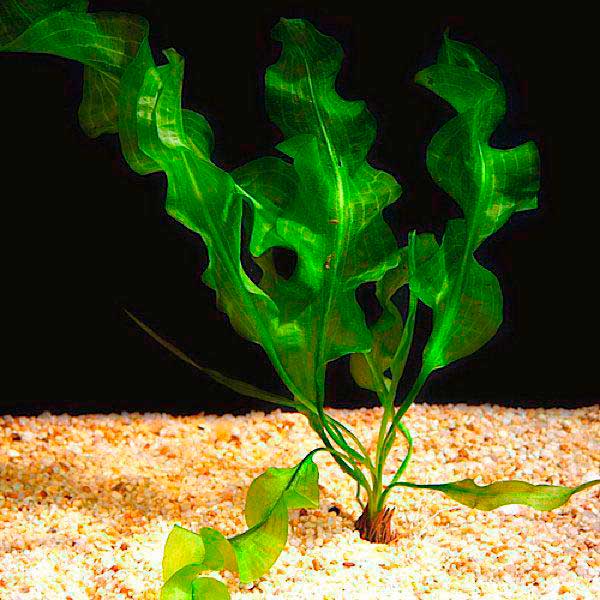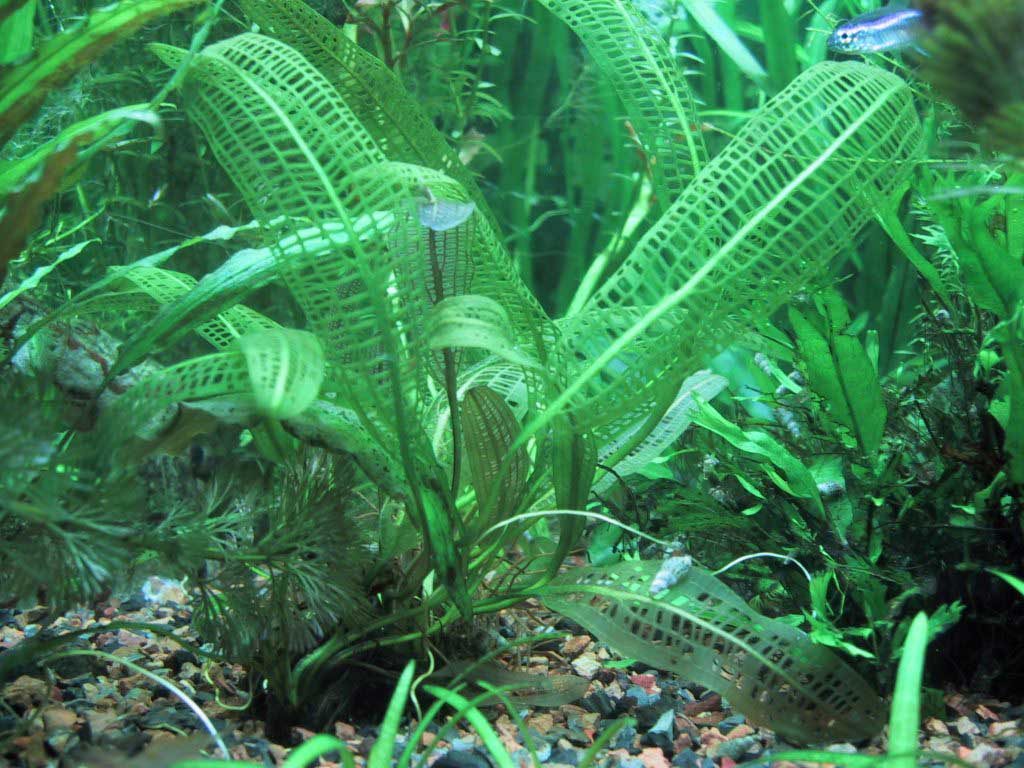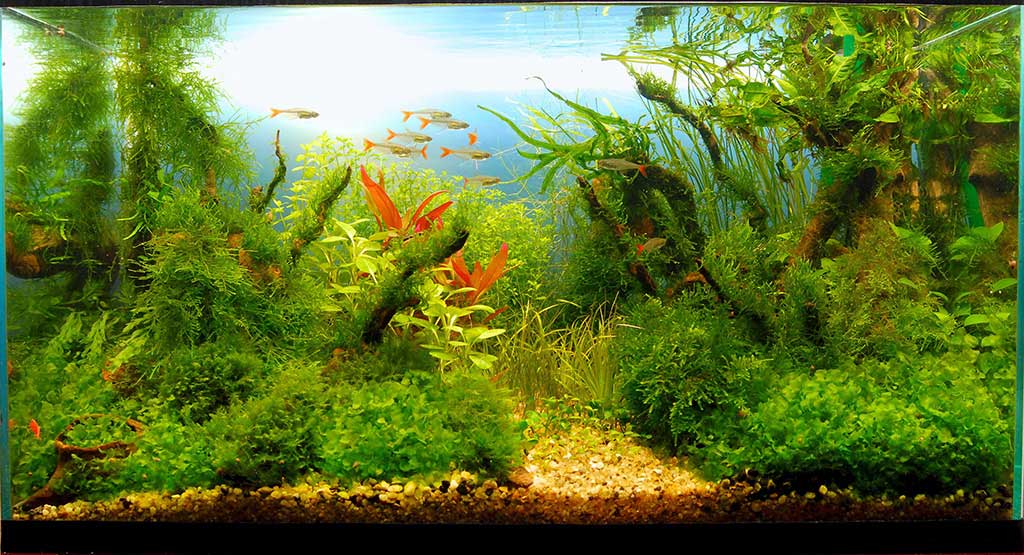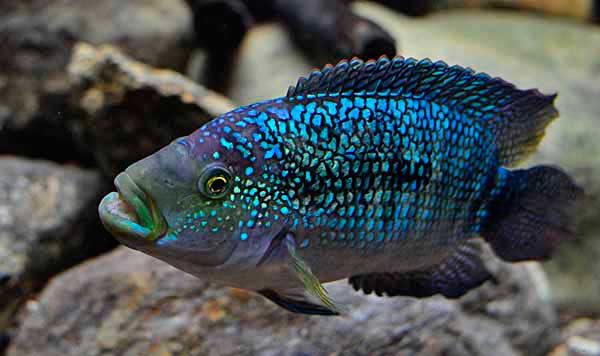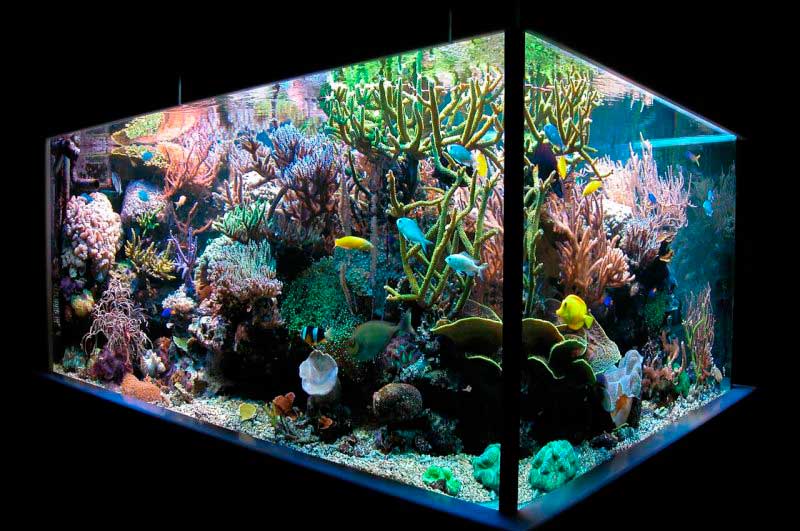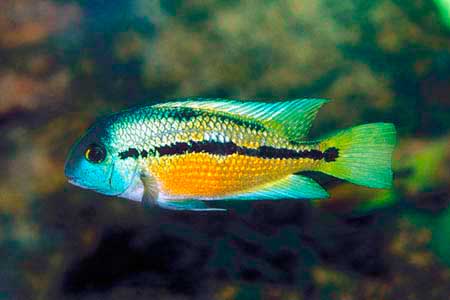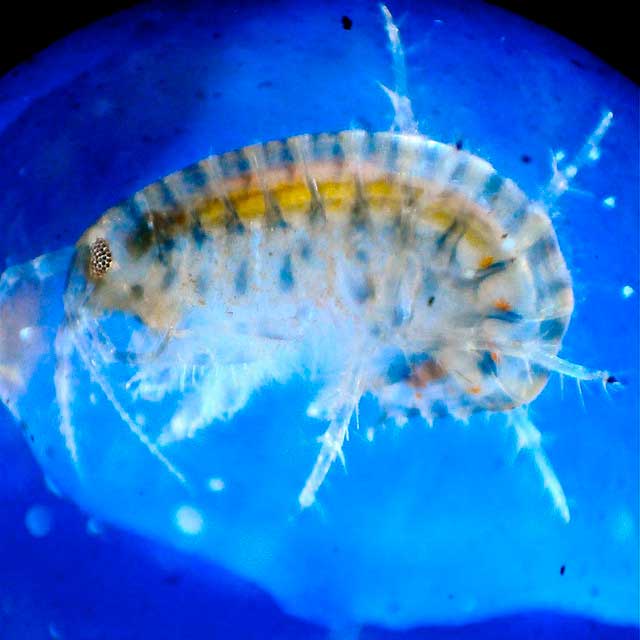Aponogeton ulviformis was described by Baker in 1881. In the aquariums of amateurs appeared for the first time in 1926. Since then, it has been gaining popularity among aquarists around the world. However, this plant remains quite rare behind the glass of our aquariums due to some peculiarities of maintenance.
Classification
- kingdom: Plants
- Division: Covered seeds
- Class: Annuals
- Order.: Passionflowers
- Family: Aponogeton
- Rod: Aponogeton
- View: Aponogeton ulviformis
Sometimes this plant is called Becker’s aponogeton according to the author who described it. The shape of the leaves gave this species another name – Aponogeton curly-leaved.
Latin name: Aponogeton ulvaceus.
This plant is quite large. Its leaves reach a size of twelve to thirty centimeters in length. Five to eight centimeters wide. The leaf lamina is bright green, thin for so long that it is almost transparent. Quite often the leaf plane is spiraled. The petioles are seven to fifteen centimeters long. They emerge from an ovoid tuber about 3 cm in diameter.
The peduncle is from eight to thirty centimeters. It has a noticeable thickening under the inflorescence. The leaf covering the inflorescence is about one and a half centimeters long, ending with an awn up to five centimeters long. The inflorescence has two spikelets with densely arranged small flowers that exude a faint odor. There are populations with purple, white and blue flowers.
Aponogeton ulviformis Propagation methods
Propagation is usually by seed. And represents a rather complicated process. Therefore, trade organizations distribute mainly tubers obtained in the natural habitats of these plants. These are northern, western and central Madagascar. Judging by the number of supplied tubers, this aponogeton is quite common in the above region.
A large aquarium is required for this plant. The bottom area should be at least one and a half square meters. The height of the aquarium is about sixty centimeters. To the conditions of maintenance aponogeton ulvovidny is not demanding. The only thing that he needs is a strong illumination. Met this plant, both in standing water, and in fast-flowing.
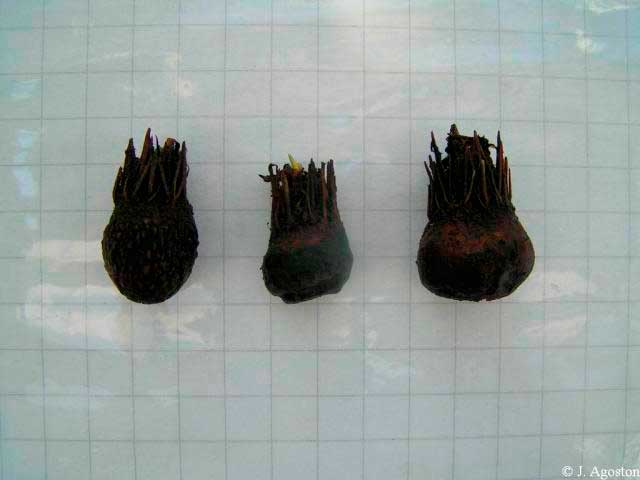
A normally developing plant blooms very profusely. There is one peculiarity in its maintenance. This is the dormant period, the beginning of which can be determined by the withering of the leaves. During this period, it is recommended to remove the tuber from the soil to prevent it from rotting. Some amateurs place the tuber in moist sand in a potter’s pot for the dormant period. Periodically this sand should be moistened to prevent the tubers from drying out. The pot should be placed in a cool but not cold place. The resting period lasts about eight weeks. After that, the tuber is again transferred to the aquarium. The rested plant develops vigorously and blooms.
Получение семян
Two cross-pollinating plants are required to produce seed. In addition, the plants must flower almost simultaneously. From the above, it is clear why obtaining viable seeds is quite a difficult task for most amateurs. However, the literature describes specimens of plants that have mastered alternative methods of propagation. For example, cases of self-pollination of aponogetons are described. Such plants give viable seeds, without being able to conduct cross-pollination. So still at least once it is worth trying to get new plants from the seeds that are formed on your aponogeton specimen. Maybe your specimen will turn out to be capable of self-pollination. It is true that only well matured plants are capable of self-pollination. Weak, underdeveloped specimens often cannot produce good seeds even when cross-pollinated.
Vegetative propagation
Becker’s aponogetons have also been described as capable of vegetative reproduction. Some plants form daughter plants on the peduncle after flowering. There are specimens that regularly form daughter tubers, which give life to new plants. Whether this is due to genetics or provoked by the peculiarities of the content is still unclear. So experiment, search. Just do not overdo it, so as not to destroy the plant and those who are near it will be. Also literary data indicate that an adult strong tuber can be carefully cut into several parts. Cut it so that each of the parts has its own green leaves. Each of the parts of the tuber becomes an independent plant.
Aponogeton ulviformis is undoubtedly one of the most beautiful representatives of the underwater flora. If you have a sufficiently large aquarium, then, planting in it this wonderful plant, you will get a wonderful opportunity to get acquainted with aponogetonami. And during flowering, it will be possible to show it to neighbors for money 😉
